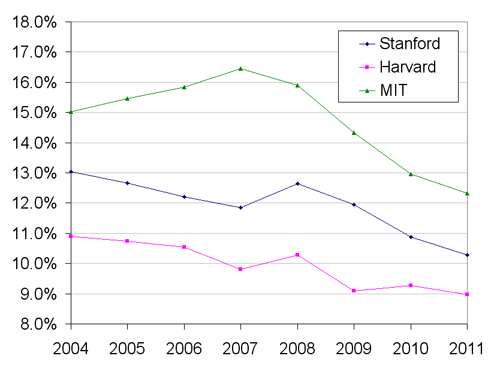Guy Kawasaki is an evangelist of the 10/20/30 rule for PowerPoint presentations: 10 slides, 20 minutes, 30-point text.
I went to a presentation today where the speaker paid that rule no heed. The resulting boring, rambling, incomprehensible, unreadable, never-ending monstrosity made me want to gouge out my eyes, glue closed my ears, and run for the exit. Ug. I actually left partway through, ostensibly for “another meeting.”
These guidelines should be required reading for anyone who needs to give presentations in a professional setting. For authors of academic or technical papers, please, please read these too.
(This post is part of the 100/100/100 challenge)
Lo, and there was light!
Today was a beautiful day in the neighborhood. About 70 degrees, blue sky, no bugs. All around, people were escaping their homes to experience the kind of day that reminds them why they live in Minnesota.
I spent my day in the office and my evening fighting with a lawnmower, but no matter: I enjoyed it anyway.
The tentative dates for my Isle Royale backpacking trip are July 13-17; let me know if you’re interested.
(This post is part of the 100/100/100 challenge)
From my inbox five minutes ago:
The Internet Corporation for Assigned Names and Numbers (ICANN(R)) recently agreed to reduce their Registrar Transaction Fee from $.25 to $.22. What does this mean for you?
Good news. You have been credited $.03/yr for each domain name you registered or renewed dating back to July 1, 2006* — $.06 has been placed into your Go Daddy(R) account
Wow, six whole cents! I’d better not spend that all in one place!
We are living in a golden age of design. Usability is a focus of product development. Devices do what they are supposed to do. Engineering has acknowledged art, and art, engineering.
![[at the d.school] [at the d.school]](/files/dschool_logo.gif)
Driving that amalgamation are programs like Stanford’s Institute of Design. When I toured the d.school space during my visit, I was struck by the similarity to IDEO, perhaps because they shared a founder. Open areas, whiteboards, post-its, stimulating furniture, and ideas — so many ideas.
One of the d.school courses gives multidisciplinary teams the task of effecting “infectious action”; in this case, Firefox advocacy. The results? Some good, others better.
(This post is part of the 100/100/100 challenge)
After reading an article about who doesn’t get into Harvard, I wondered: who does get into Harvard these days?
If we plot the undergraduate admission rates for Harvard, MIT, and Stanford for the past seven class years, we see a trend towards higher selectivity. One driving factor is that class sizes have stayed relatively constant while the population at large has grown. Will the decline in the US birth rate ease the competition?

(This post is part of the 100/100/100 challenge)
![[at the d.school] [at the d.school]](/files/dschool_logo.gif)

Recent Comments